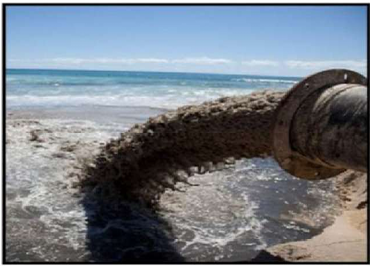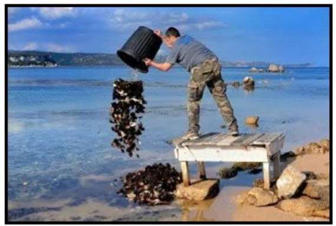Name of the project:
Collect information on incidents of water pollution caused by human intervention.
Need/Importance of the project:
i) Investigate water pollution's impact on health to propose preventive measures.
ii) Examine human induced pollution threatening local aquatic ecosystems for
conservation institutes.
Hypothesis:
i) Human activities contribute to heightened water pollution levels.
ii) The security of pollution correlates with the proximity of human settlements.
Materials and apparatus:
i) Water sampling kids to collect samples from various water resources.
ii) Chemical test kits for one-site analysis of water quality parameters.
Work plan:
i) Research on water pollution sources.
ii) Acquire and calibrate testing equipment.
iii) Conduct fieldwork, sample collection, and initial data analysis.
Description of actual procedure:
i) Begin at identified water sources, including rivers, lakes and Wells.
ii) Used sterile containers to collect water samples ensuring minimal contamination.
iii) Employee chemical test kits for immediate assessment of key parameters like pH,
turbidity and temperature.
iv) Store collected samples in temperature controlled containers to maintain integrity
during transportation.
v) Transport samples to the laboratory for comprehensive testing using advanced
equipment.
vi) Perform detail analysis for pollutants, heavy metals, and microbial contamination.
vii) Utilise GIS software to create special maps depicting pollution sources and affected
areas.
viii) Cross verify field and lab results to ensure data accuracy and reliability.
Observations:
i) Note varying pollution levels, evident through colour, order and visual cues.
ii) Observe how these gradients correspond to proximity human activities.
iii) Document observable effects on aquatic organisms such as altered
behaviour or population decline. Consider the ecological consequences of
pollution on the local biodiversity.
iv) Track changes in pollution levels over different times of the day and
seasons.
v) Observe and record human behaviour around water bodies, noting
activities that contribute to pollution.
vi) Capture photographs and videos of pollution sources and their
surroundings.
vii) Correlate on-site observations with GIS-map pollution sources.
viii) Engage with local communities to gather anecdotal evidence of
changes in water quality.
ix) Consider the impact of weather conditions on pollution levels.
Data analysis with the help of tables/graphs:

Inferences:
i) Human activities significantly contribute water pollution.
ii) Pollution levels vary based on geographical and human settlement factors.
Suggested measures:
i) Educate residence on responsible waste disposal and pollution prevention.
ii) Advocate for strict regulations on industrial discharge and waste management.
iii) Promote planting trees to prevent soil erosion and water contamination.
Reference materials:
i) Academic channels on water pollution.
ii) Environmental impact reports from local authorities.
Acknowledgement:
i) Thankful for the mentorship and support from teachers and
environmental exports.
ii) Grateful for assistant and cooperation from local authorities and
residents.
iii) Thanks to environmental exports who generously contributed in
their expertise, validating observations and in reaching the project
with their insights.
Required diagrams/photographs:
